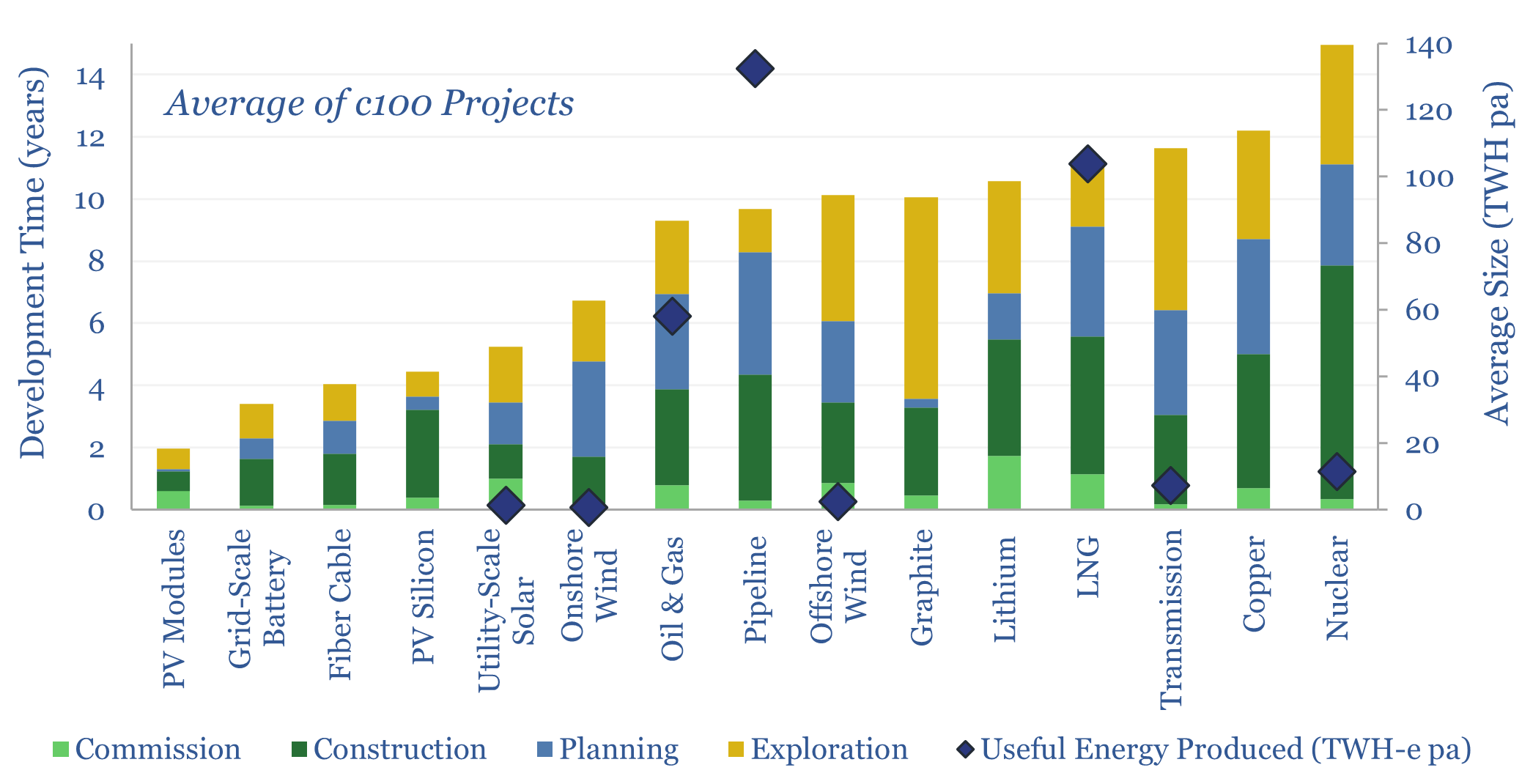Energy development times average c4-years for solar projects, 6-years for wind, 7-years for oil, gas, pipelines, LNG, 13-years for nuclear, while infrastructure such as mines, gas pipelines and power transmission lines often takes 10+ years. This data-file tabulates examples from first consideration, through permitting, to final investment decision (FID), construction, and ultimately as their nameplate capacity is reached.
Energy transition is the largest construction project in the history of human civilization, but the nuances of long construction timelines are often overlooked.
Energy development times tend to average c4-years for large solar projects, 6-years for large offshore wind, 7-years for new pipelines, 7-years for new oil and gas projects, 9-years for new LNG plants and 13-years for new nuclear plants, across the examples tabulated in this data-file. There is a spread within each category.
Specifically, on our definitions, the exploration phase of a project begins when a team is created to consider its feasibility. More detailed planning and engineering follow. Another milestone is when the project is given regulatory approval, which is usually followed by more detailed engineering and design. The next milestone is taking a ‘final investment decision’, which is usually followed by commencing construction. First output may occur before the project is fully completed — temporarily, at less than nameplate capacity, or while systems are being tested. Finally, the project is completed and reaches its nameplate capacity.
As a rough split, development times break down as 40% planning, 50% construction and 10% ramp-up/commissioning. The best projects in each category are often around 50% faster than the average.
The data in this file draw from our broader work into solar, wind, AC transmission lines, HVDCs, LNG and midstream infrastructure, copper, lithium, batteries.
Relevant to the data-center industry, we have also tabulated the timelines for fiber optic cables as a comparison, as it is materially faster to build fiber optic links than gas/power infrastructure.
Full details are given for each of the c100 projects in the data-file, in order to stress-test our ability to cure energy shortages and power grid bottlenecks by ramping new projects.
More and more, we simply have respect for anyone building anything at all. Especially if the capex is brave and countercyclical (note below).
